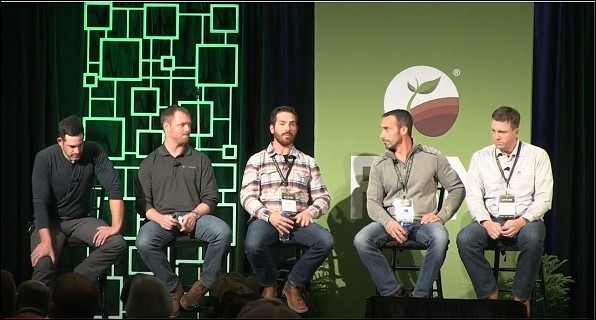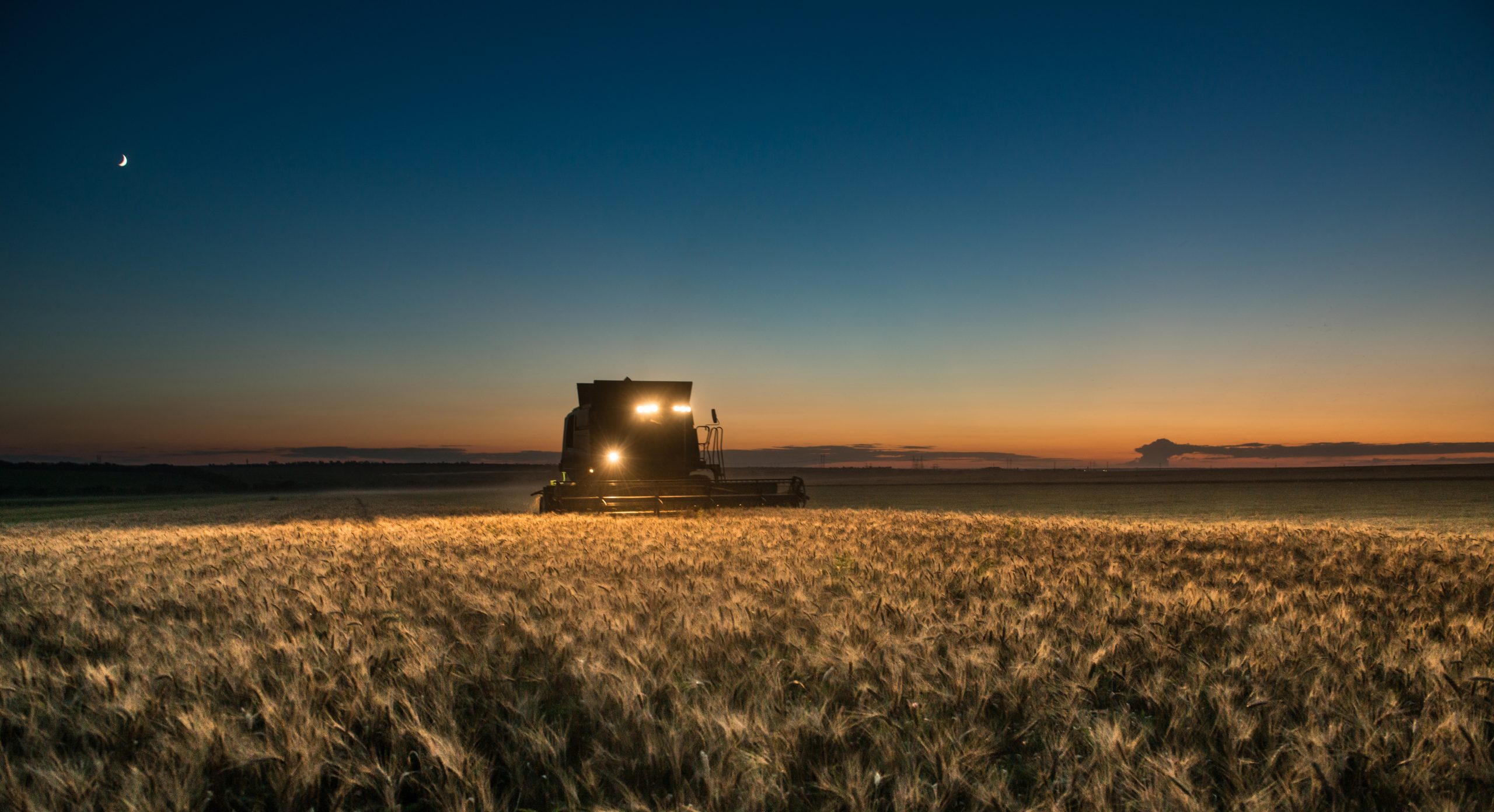- Published On: April 20, 2021
- Author: AgriSecure
If securing farm loans for organic transition feels daunting, we have some good news. It’s not as hard as it used to be. In fact, there’s a number of new options that could provide a solution for you and your operation.
Traditional lenders, farmland investors, non-profits, and even big food companies are starting to create more financing options to help farmers make the transition to organics.
We’ve put together a list of some options worth considering along with advice on how to evaluate them. And, just as important, we’ll discuss how you can develop a realistic plan that makes your lender say, “Yes!”
Traditional lenders with farm loans for organic transition
More banks and lenders are creating loans specifically designed for the organic transition process.
One such lender is Rabo AgriFinance. Their organic transition loan gives farmers the capital they need for the upfront costs associated with organic farming. Then when a farmer receives additional revenue from their certified organic crops, they can schedule repayments.
Compeer Financial, an Upper Midwest-based Farm Credit Cooperative, offers a similar product. Their organic bridge loan requires farmers to only pay interest on the loan for the first 2-3 years, with a declining balance operating loan. Once they receive organic certification, it converts to a standard 5-year intermediate-term loan with fully amortized principal and interest payments.
Land investors and rental agreements
Another option for financing the transition is through farmland arrangements.
Some investors want to invest in organic farmland. To help make that happen, they’re creating leases for farmers who will transition to organic and continue farming using sustainable and regenerative practices.
One example is Clear Frontier Ag Management, which offers long-term, flexible lease structures to family farms transitioning to organic production. They work with farmers in four phases: lease structuring, land stewardship practices, operations, and offtake arrangement. Currently, they own and manage more than 3,000 acres of farmland across six family farms.
As of March 2021, Clear Frontier is actively investing in conventional and organic land across the U.S. and seeking organic farmers for long-term leases.
But you don’t need to work with an investment group to create a similar arrangement on your own farm. If you already rent land, consider whether your landlord would be willing to do a crop-share agreement. Look for creative ways to engage those who already have a stake in your success that could help reduce your financial burden.
Non-profits invested in sustainable practices
Another emerging group of lenders is non-profits, like Mad Agriculture. In support of their mission for restoring our relationship with the earth, they help farmers adopt regenerative and organic practices. That includes farm loans for organic transition.
Just this year, they launched the Perennial Fund, which provides long-term financing to farmers making the transition. Whether a farmer needs new equipment, infrastructure, or operating capital, the Fund’s goal is to give farmers the financing they need to successfully manage the transition period.
And to help their farmers succeed in organic, they’re working on ways to assist them with marketing and create a community among their growers to foster support.
Grants and programs that can help with expenses
Food companies that need to source organic ingredients also want to lend their financial support to farmers. Michelob ULTRA — which produces Pure Gold, a USDA-certified organic light lager — is one example. In partnership with the non-profit CCOF (California Certified Organic Farmers), the brewery is providing $5,000 grants to eligible farmers who want to transition.
Michelob ULTRA is also guaranteeing to purchase barley from farmers during the transition once they’re certified organic.
Other programs assist with expenses associated with organic farming, such as cover cropping. The NRCS Environmental Quality Incentives Program (EQIP) is one that gives farmers a payment for seeding cover crops. Your local watershed and state-based organizations may have their own financial incentives for adopting environmentally friendly practices.
Since this type of funding is on a much smaller scale — and there’s no guarantee you’ll receive it — think of them as more of a “nice to have” versus a necessity. Focus your time and energy on securing the finance you need to stay economically sound during the transition first. Then if you have the time and desire to pursue smaller amounts, go for it.
Evaluating options with farm loans for organic transition
With several funding opportunities on the market now, how can you determine the farm loan for organic transition?
First, consider the motivation of the lender and the dynamics of the loan.
Traditional lenders that offer transition loans probably hope to play a more significant role in your farm’s overall financing. So when evaluating these opportunities, you need to ask yourself: Do I want to move my business to them?
And consider the impact that would have on your farm. Transitioning to organic is already a big change. A complete overhaul of your financing situation might create too many unknowns all at once.
With non-traditional lenders, their intention might be a little more altruistic. But you still need to consider what their rate of return is going to be and what you’re going to have to pay for it. Are there any stipulations around what you can and can’t do? What kind of support do they offer?
If they offer support beyond lending, consider their experience and expertise with large-scale organics. If they’ve only worked with small operations or academic settings, they may not understand the reality of larger scale commercial organic farms.
When evaluating a lender, always ask yourself the following questions:
- When will I need to repay my loans and how does that help support the transition?
- What’s the interest rate I’ll be paying?
- What source of assets do I need to pledge to provide a lien against, if any, to provide the security they need?
Don’t dismiss your current lender
Before pursuing a new lender, see if there’s a way you can work with your current one. If they can create an option that works for you, it’s probably your best choice. It brings the smallest degree of change during a time that’s full of them.
Most of the hesitation that comes from traditional lenders is because they’re not familiar with organic. When you present a clear path to profitability, you’re more likely to win their support. Check out the blog post “5 Steps for Financing the Transition to Organics” to see what lenders look for in farmers pursuing organic and how you can improve their odds of saying, “Yes.”
Create a plan to secure financial support
Financing the transition to organic isn’t always easy. But we’ve found that when you’re working with an experienced partner like AgriSecure, lenders have more confidence in you.
No matter whether you pursue a creative engagement with your farm’s stakeholders or work directly with your traditional lender, you need a plan. It’s important to know how you’re going to transition successfully and deliver long-term profitability.
That’s where we can help. With our MyFarm platform and first-hand experience in large-scale organic farming, we can partner with you to create a plan that helps you win financial support and sets you up for organic success. We can also help you evaluate which lending opportunities are the best fit for your business.
Your first consultation with us is free. Schedule a call and get your plan to organic started today.
Related Articles
-
Imports Have an Impact on Organic Crop Prices: Here’s Why
Organic soybean prices are skyrocketing. The Jacobsen reported that prices were up to $32 per bushel in the Midwest in May 2021. What’s behind this impact on organic crop prices? And why aren’t organic corn premiums keeping up? In short: it’s all about supply and demand, especially imports, says David Becker. David is an analyst […]
-
Organic Farming Loans Support Growers during Transition
Ask a farmer what’s keeping them from transitioning to organic row crops, and you may be surprised to hear a common answer. Finances. It’s often a struggle to find organic farming loans tailored to their needs. Yes, organics offer excellent premiums and can bring long-term profitability. But first you have to get through the 36-month […]
-
Organic Breakevens: What to Know and How to Calculate
If you’re thinking about organics, you’ve probably debated whether it’s going to pay off — literally. Yes, the price premiums are good, but you’ve heard your yields will take a hit. How can you predict profitability? The answer: calculating your organic breakevens. What are an organic breakevens? Simply put, it’s a way to calculate what […]
-
Know Your Numbers to Push Crop Profitability
Yield is often the top priority in farming. The truth, though, is that the highest yields will not necessarily result in the highest ROI. And this is especially the case for organic production. We know good execution results in the best yields, but the best way to maximize your crop profitability is to know your […]
-
6 Ways to Protect Organic Profits in Uncertain Times
Economic uncertainty hits all sectors of the agriculture industry, including organics. The good news? It’s possible to safeguard your organic profits. For a start, it’s even more important for organic farmers to focus on executing their operations really well. The better the execution, the better you can weather the market conditions and remain profitable. Here […]
-
5 Steps for Financing the Transition to Organics
Profits. They’re one of the primary reasons farmers decide to move into organic production. Financing the transition to organics, though, can be one of your biggest hurdles. That’s why the support of a banker or ag lender can be a lifeline for farmers looking to get into organics. The right backing helps you build an […]
-
4 Keys to a Strong Organic Fertilizer Strategy
Questions about an organic fertilizer strategy are common in organic farming. How do I provide enough nutrients? In particular, nitrogen. How do I manage my crop and soil without using synthetic fertilizers? Fertilizer can come from a variety of organic sources, including animal waste, decomposing plants, and nitrogen-fixing crops like soybeans and clover. So it’s […]
-
Consider Organic Farming? Yes.
With so much economic uncertainty caused by the COVID-19 pandemic, you may be wondering: Is now the right time to transition into organic crop production? Is this the right time to increase the number of organic acres you’re already farming? My answer, yes. Current market conditions, falling commodity prices for conventional crops and somewhat lower […]
-
80 Million Millennials Can’t Be Wrong: Farmer Panel
80 million millennials are a part of the driving force behind the rapid growth of organic food demand. So why aren’t more farmers transitioning into a system that sees premiums of 2x over conventional and profitable margins? In a panel that took place at FBN’s Farmer2Farmer V event, AgriSecure co-founder and organic farmer Bryce Irlbeck […]
-
The Impact of COVID-19 on Organics Marketing
With COVID-19 causing conventional corn and soybean prices to fall, organic farmers may be wondering how the pandemic is going to affect their marketing plans. Currently, organic corn prices are down because of strong production in 2019 and higher imports. Prices for organic soybeans, on the other hand, have risen due to a decrease in […]
Get in the know
Our newsletter, it’s a quick read. You’ll get industry news plus all the latest organic insights. Who doesn’t want that?











